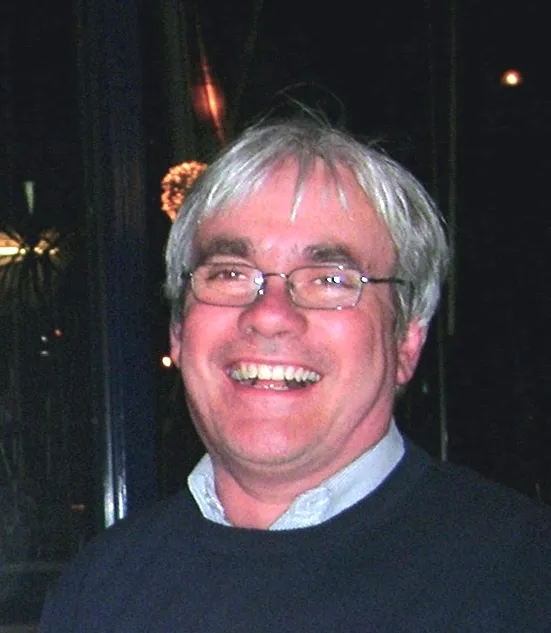Obituary: Tim Green
Submitted by sharragrow on 06 Jun 2022

By Stephen Hackney
On 20 April 2022, Tim Green died at the age of 68. He will be greatly missed by his wife, Hazel, and his son and daughter, Joe and Nicky, as well as his wider family, all of whom were dear to him. Tim spent his conservation career at the Tate, from his student days until his retirement in 2018. He will also be remembered fondly by friends and colleagues throughout the conservation world.
As a student, Tim benefitted from a four-year training programme established between the Courtauld Institute and the Tate, both London, UK. This programme was unfortunately very short lived, yet it taught practical conservation, provided museum experience and, at the time, uniquely provided a grounding in the conservation of modern paintings and works of art.
Until 1967, major international loan exhibitions in the Duveen galleries at the Tate were frequently organised under the auspices of the Arts Council. After that date, the Tate arranged most of its own exhibitions. The need for a permanent exhibition conservator was identified and Tim Green was appointed in 1981, where he faced busy schedules and was expected to work to tight deadlines. But there was concern, however ill-defined, that works of art, both loaned to and from the Tate, were being exposed to too much risk. Fortunately, the Conservation Department had begun to address the need for preventive conservation of the Tate collection, especially for modern works of art, and recognised that this responsibility extended to loaned-in works. How much damage was being done, how could we know which damage could be attributed to exhibitions, and what was the scale of the risks? Most of all, could exhibitions be made relatively risk-free? With characteristic enthusiasm, Tim was determined to find out about the physical risks. Over a ten-year period, he measured the shocks and vibrations experienced by works of art and explored packing case designs. In the process, he became quite a showman, arranging several open demonstrations where he took particular pleasure in the controlled destruction of simulations of paintings.
His research was directly concerned with actual gallery practice, for instance, framing and glazing paintings had become a mainstay of conservation practice and, following the opening of Tate Liverpool in 1988, it was important to transport them simply and economically from London. We already knew that impermeable backboards preserved humidity levels inside the frame environment and newly available low-reflecting glass was visually acceptable to protect unvarnished surfaces. Initially, to protect the glass from breakage in transit, it was taped, however on removal this frequently left release patterns on the coated glass. Tests done by Tim, reinforced by careful experience, demonstrated that as long as the glass was fitted properly in the frame rebate, the danger in transit was small and the tape was unnecessary. These findings challenged existing cautious practice and informed glazing methods, as well as proving the value of such research.
Tim then contacted other institutions with expertise and commitment to loan exhibitions, and in conjunction with the National Gallery of Art and the Smithsonian institution in the USA and the Canadian Conservation Institute, devised the Art in Transit (AIT) programme to disseminate and interpret research results. The AIT conference in London in 1991, the workshop manual and the conference proceedings remain the basis of practice in art transport. Over several years and many gruelling hours, Tim’s drive kept this international group focused on working towards a successful outcome. The results underpinned future exhibition successes and pre-empted Tate’s further expansion. Unfortunately, I think the stress of this project on top of his everyday duties also had a detrimental effect on Tim’s health.
Many conservators will have met Tim in his role as exhibition conservator, but he also carried out practical treatments on paintings in the collection. The restoration of Richard Hamilton’s collage, Hommage à Chrysler Corp. 1957 is a good example of Tim’s work. Although the painting was in generally good condition, a small but critical area of collage had yellowed and darkened more than other elements. With the artist’s approval, Tim covered the photographic collage item with a further piece that matched the overall state of the work, printed on thin cigarette paper. He achieved a simple, but precise, minimal intervention. The common theme, then, is simple analysis of outstanding problems combined with sensitive visual awareness.
Prior to the opening of Tate Modern in 2000, there was a wish to preserve the magnificent view from the upper galleries to the Thames and St Paul’s cathedral. However, excessive light from the large windows threatened to restrict the display of light-sensitive material in these galleries. Tim’s compromise solution was to choose two grey filters, the darker one for the top half and the lighter below. This compromise allowed most of the gallery, except for a couple of metres around, to be used for all but the highest category of light-sensitive material. The magnificent view out was preserved and nobody has ever complained about the darker filter which is above the sight-line to the cathedral.
Tim’s enthusiasm was also translated to the Royal Academy of Arts, London, where, as Professor of Chemistry, he gave lectures and advised the students for over a decade. He was very proud of this, since the institution usually renewed professors every few years. Tim advised painting students on the use of materials that would last. Consequently, there now exists a group of canvases that his students deacidified with chalk prior to painting. One day, when other canvases have deteriorated, some of these may become his unspoken epitaph.